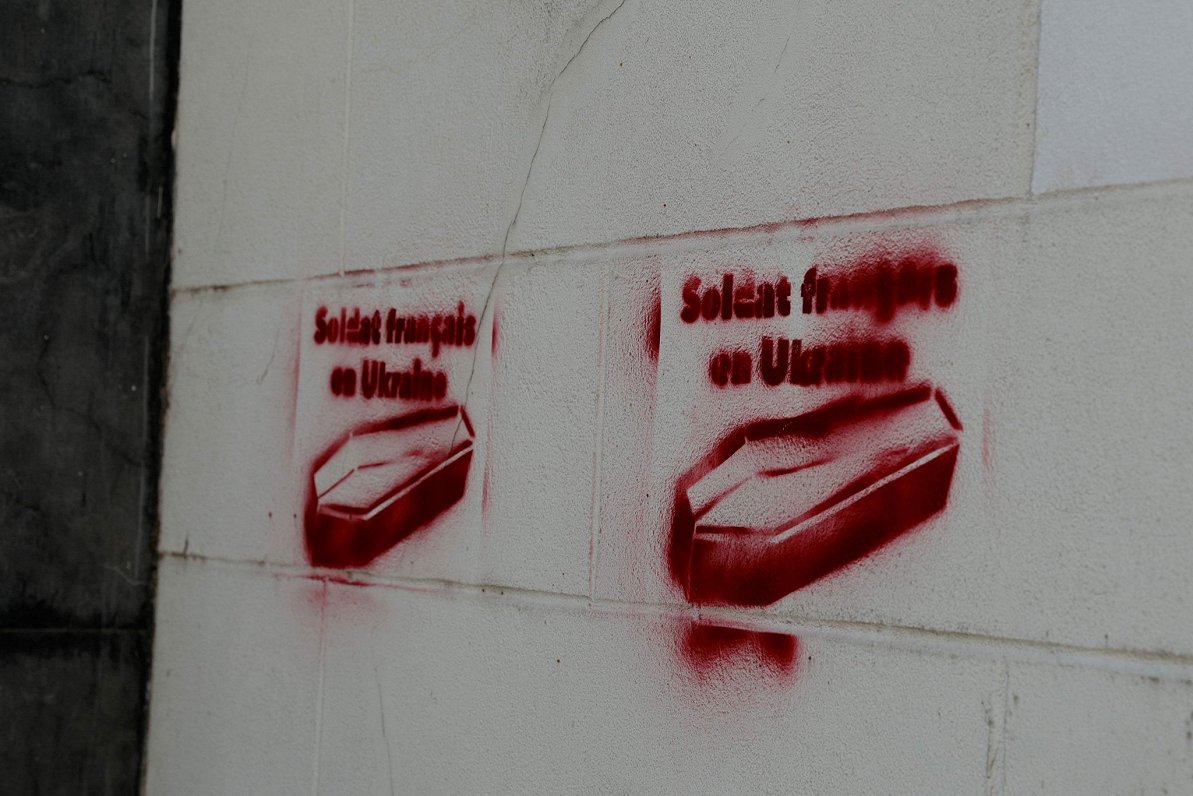Days later, three Moldovan citizens were arrested for spray-painting images of coffins with the same inscription on the streets of Paris. The French intelligence service suspected Russian interference behind these incidents.
These events highlight how disinformation and propaganda campaigns can exploit our associations with protest culture, using tools and symbols typically seen as expressions of genuine dissent to create an illusion of legitimacy.
The Role of Street Art in Propaganda
Street art has long been a powerful way to spread messages and connect with the public, says curator and art researcher Auguste Petre. Even in ancient Pompeii, people painted political campaign slogans on walls in bright colours. Modern street art, especially graffiti, began in the United States in Philadelphia and New York. In the 1970s and 1980s, it became a way for people to express their opinions and frustrations publicly.
Latvia experienced a similar trend. The documentary "Is It Easy to Be Young?" ("Vai viegli būt jaunam?"), directed by Juris Podnieks and released in 1986, depicts the struggles of Soviet youth. The film features punks using graffiti to rebel against the state, reflecting a mid-80s surge in graffiti that was more than just an expression of individuality, but a call for political and social change in the rigid and declining Soviet regime. Through graffiti, young Latvians voiced their frustrations and demanded change, reflecting a global trend of using art for resistance.
Auguste Petre notes that back then, walls functioned similarly to how social media does today. In fact, if we consider it, the feed of social media posts is indeed referred to as a "wall."
Nowadays, people live within information bubbles, mostly consuming content that aligns with their existing beliefs. Yet street art can break through these confines, reaching a diverse audience beyond the artist’s control. Unlike conventional art exhibitions, street art is seen by passers-by from all walks of life.
Visual material also has the advantage of conveying dense messages concisely and impactfully. This is exactly what graffiti works with, notes Auguste Petre, as it’s the culture of symbols and slogans, and sometimes one word is enough to understand the whole underlying story. This type of communication is especially useful for disinformation because visual images quickly attract attention and evoke emotions, while brief messages can leave a lasting impression, even if untrue.
Street Art as a Barometer of Public Sentiment
Street art can be seen as a barometer of public sentiment, serving as part of protest culture and grassroots movements. It is a means for the public to express genuine feelings about issues affecting them, for instance, in times of conflict or economic decline. Because street art is usually seen as an authentic reflection of public opinion, fake graffiti criticising the government can give the impression of widespread discontent.
Faro, a member of the Latvian graffiti crew TDV, featured in the documentary "Better Not To Draw!" ("Labāk nezīmē!") directed by Toms Upītis as part of Latvian Television’s "Latvian Code" series, commented on this phenomenon. "Purely semiotically, graffiti is the aesthetics of protest. Writing with a spray can reminds people of some sort of protest or similar feeling. Therefore, this aesthetic is very useful if you want to create the impression that someone somewhere is protesting about something. So, the people conducting these disinformation campaigns, using the graffiti aesthetic, have very cleverly chosen this medium to fool people."
Disinformation exploits the association of street art with authentic expression and its often illegal nature. As Faro notes, it’s very difficult to prove the author’s identity if they’re not caught in the act. Even if they are, there’s no way to determine if the individual is responsible for all similar works, whether they truly believe the message, or are simply fulfilling someone else’s order.
The Struggle of Democratic Expression
In a truly democratic society, we should be able to freely express our opinions and beliefs. However, disinformation exploits the Western concept of liberal values and takes advantage of democracy by masquerading as legitimate freedom of expression for its own dubious purposes. As demonstrated by the French case, disinformation weaves false narratives into the public space, posing as the voice of genuine members of society. This can create the false impression that French society is protesting in support for Ukraine when, in reality, these protests are orchestrated by recently arrived foreign nationals paid to spread propaganda. The graffiti writer Faro laments that the infiltration of disinformation into graffiti culture could undermine the authenticity of protest messages seen in public.
Aigars Bikše, an artist and professor at the Latvian Academy of Arts, acknowledges the potential harm of using public art to spread harmful ideas. But he believes that democracy, despite its flaws, is the best system we have, as Winston Churchill once said. Reflecting on the spread of disinformation and our ability to sift through the information we encounter, Bikše notes, "It is an endless struggle both in the public and personal space – to understand what is or isn’t real. No one from the outside can fully help with that; it is what we call critical thinking. People will have to face this more and more if it is a democratic society."
Street art can be a powerful medium for spreading propaganda and disinformation. Its very presence in public spaces, however, also signifies the existence of true democracy, allowing society to express itself freely. As Aigars Bikše and Faro suggest, street art is a testament to a city’s vibrancy and life. It is, then, better to live in a society that permits self-expression, even if it occasionally is exploited than in one that suppresses all forms of genuine expression.































